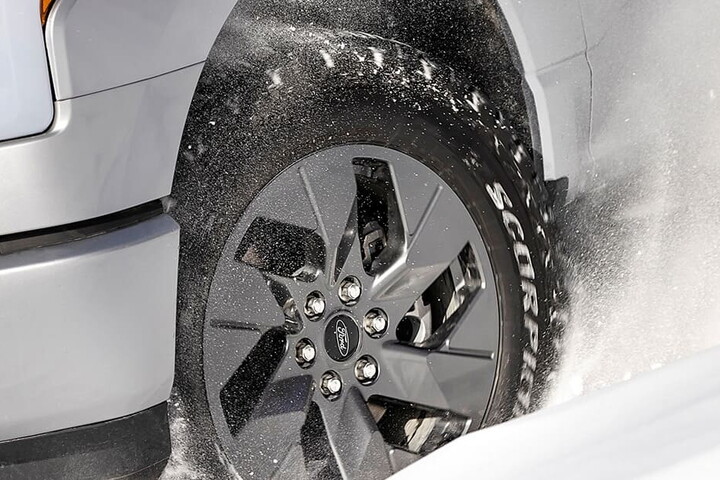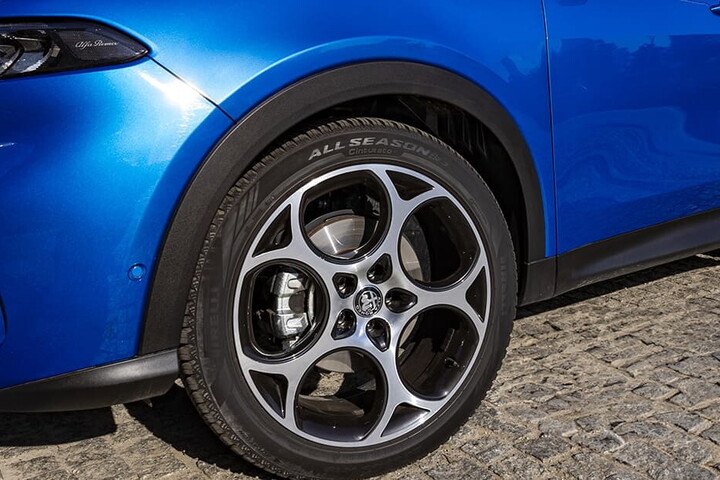Everything begins with the tyre pressure. If a tyre is inflated correctly, you can travel safely and deal with any problems that arise during driving, whether they are caused by yourself or others. This, however, is an idea that most motorists struggle to bear in mind.
A recent study in Europe found that 65% of motorists drive with tyres that are not properly inflated, 40% travel with at least one tyre which is very deflated and 12% (one driver in eight) have found themselves in a dangerous situation as a result of a tyre-related issue.
Conversely, having your tyres 'in order' offers numerous advantages. Most importantly, it makes your vehicle much safer. Road grip is optimised, as are the car's stability and ability to stop when braking. Generally speaking, your car will be easier to handle.
Discover more
TyresHow, where and when to measure the pressure of your tyres
Regular checks
The key question is: when should you check your tyre pressure? It's best to check your tyre pressure once a month, as well as whenever you are about to set off on a long trip.
You should check your tyres when they are cold, as the pressure is usually higher if the tyres are warm, so you might get an incorrect reading. While it's not that tricky to use a pressure gauge, if you're not in a hurry you might be better off asking a professional. You can check the correct bars for your car by consulting the manual, though in very particular cases of heavy loads or adverse weather it would be better to check with a specialist.
Rotation should be total
To ensure that your tyres wear evenly, it is also necessary to rotate them carefully every 15-20,000 km. You should rotate the pair that is subject to more friction with the two that are free – almost always the rear ones.
While some people still think that you should use the spare tyre in the rotation, this is a mistake. It is more important, of course, to make sure the spare is always ready to use in a possible emergency. Tyre rotation can noticeably extend the life of your tyres, and when the time comes, you should change the entire set. This will ensure the performance of your car remains balanced. Rotation is absolutely essential if you have all-season tyres, which are not swapped over when the seasons change.
Discover more
TipsAdvice for driving in hot weather

How tyre wear occurs
Wear is caused almost exclusively by the friction that occurs during driving on the tyre's contact area, and as a result of related forces such as engine torque, braking and steering torque. Friction as the tyres rotate is caused by the compression that the tyre structure experiences due to the load it has to bear.
Yet we could say that this is just part of the game. The appearance of a bulge on the flank of the tyre, on the other hand, is a clear sign that the tyre's carcass has been damaged. The cause? Accidental collisions with the pavement or other obstacles found on bad roads, and potholes. However, this 'bubble' may also be generated by low tyre pressure, overloading or, in some cases, a car with a too rigid distribution. In this situation, the solution is clear: the tyre must be replaced.
Avoid pavements
'Smooth' driving is great for your tyres. For example, the flank (or shoulder) of your tyre is the weakest part, which means that when parking you should always try to ensure it doesn't make contact with the pavement. It is also a good idea to pay a bit more attention in your general driving: if you take a turn too tightly and knock your tyre, you could well find you have to get it replaced straight away.
While the tread area is the most robust part of the tyre, it is still a bad idea to park by leaving half of the tyre on the slope or go over bumps or deep potholes at full speed. As well as damaging the tyre, there is also a risk of damaging the rims and, in the most serious cases, even affecting the suspension.
Getting old even if they're not used
A message to drivers who think they are 'racers': tyres that are subject to violent braking and acceleration will unquestionably not last that long. It's much better to have a smoother, gentler driving style, with less use of the steering wheel and lighter pressure on the brake and accelerator.
If your tyre's tread wear means that the grip reaches the indicators found among the grooves (placed at a width of 1.6 mm), the tyre should be replaced. However, it would be better to plan your tyre change when the distance reaches 3 mm. You should also be aware that even if you cover only a few kilometres a year, the tyre still becomes less elastic and loses its grip with the passing of time. This means it's not a good idea to keep older tyres forever. Even if it seems like their condition hasn't deteriorated much, it's better to have them changed after five or six years.




